Sonic the Hedgehog (Archie comics)
From Sonic Retro

|
| Sonic the Hedgehog |
|---|
| Publisher: Archie Comics |
| Country of origin: United States |
| First issue date: 1992-11-04[1] |
| Last issue date: 2016-12-28[2] |
| Number of issues: 290 |
| Frequency: Monthly |
| Price: $1.25 |
Sonic the Hedgehog was a series of comic books produced by United States-based comic book publisher Archie Comics between 1992 and 2016. With issues being released monthly during its 25 year publication (including spin-off publications, compilations and crossovers with other Archie properties) it is currently the longest running and likely most successful form of Sonic-related licensed media after the video games, and was recognised as the longest running comic series based on a video game by Guinness World Records even prior to its eventual discontinuation.[3]
While officially licensed by Sega, the comics featured a continuity separate from the video games as the series initially started as a collective adaptation of the television series Adventures of Sonic the Hedgehog and the Saturday morning Sonic the Hedgehog show, with lead character Sonic the Hedgehog being a member of a group of animal Freedom Fighters, initially aiming to liberate the planet Mobius from Dr. Robotnik. As the series progressed following the cancellation of both shows, it would attempt to incorporate the stories from newer Sonic the Hedgehog video games and other media, while also maintaining its own lore, complete with a set of original characters.
Following an undisclosed abrupt hiatus in early 2017, Sega announced the cancellation of the Archie Sonic the Hedgehog comics on July 19, 2017.[4] It was succeeded by a new comic book series published by IDW Publishing in April 2018, with some of the creative talents from the Archie series working on it.
The reason for the comic book's abrupt discontinuation remains officially undisclosed, but it is heavily suspected by the fandom and press it may be related to various legal disputes Archie Comics has been facing with some of the comic book's former writers, and a history of internal management conflicts not directly related to the comic book series. In addition, Archie Comics was in a transitional period to focus on reinventing their own original intellectual properties, and moving away from publishing licensed comic books in general, as Sonic the Hedgehog and its spin-offs were the last remaining licensed comic book series discontinued by Archie Comics.
Contents
History
On the 23rd of July 1992, Archie Comics's Betty and Veronica writer Michael Gallagher was phoned by his editor, Daryl Edelman while on holiday in Florida[5]. While expecting to talk about "new ideas for the girls", he was instead told of Archie's acquisition of the Sonic the Hedgehog license; the "hot new property" from Sega which was in the process of being turned into a cartoon by DiC Entertainment[5]. Given some loose details on Sonic, his love interest "Princess" and arch enemy "Robotnik", Gallagher was tasked with producing a comic series, supervised not only by Archie, but by Sega and DiC, the first script being due within the week[5].
This was not the first time Sonic the Hedgehog was made into a comic book. Sega of America had previously released a promotional comic for the first game in 1991, following the "official" lore as outlined in the Sonic the Hedgehog Bible. DiC, however, were developing their own formula - one which would see a completely new backstory for Sonic, as well as radical redesigns some of the games' rescued animals, many of which would become core parts of the main cast. DiC provided early line art for the characters[5], but much of the world building was up to Archie, with elements loosely on the contents of the first Sonic game.
The first comic to be released, the free Sonic the Hedgehog ¼ would debut in late 1992, with followed by a four-issue "Mini-Series" would then be produced (issue #0 debuting alongside Sonic the Hedgehog 2 in November). Starting in July 1993, the series would become by a full monthly comic production, and would remain as such for the next 25 years. While based on DiC's designs, Archie's comics would debut ten months prior to the resulting television series ("SatAM"), and while efforts were initially made to unify the two (Princess Sally Acorn sporting an older, pink design for the first dozen issues, and Rotor Walrus being referred to as "Boomer") , Archie's comics would go on to out-live SatAM and become its own self-contained universe.
While marketed as part of Archie's "Adventure Series", Sonic the Hedgehog initially had a light-hearted tone with comedic characters, with plenty of fourth wall-breaking content and references to other publications (as well as quirks in its own history). Robotnik and his badniks were played as comedy villains similarly to DiC's weekday Adventures of Sonic the Hedgehog television show rather than its Saturday morning cartoon, whereas characters such as Antoine D' Coolette took on the role of comic relief.
During 1995 and 1996, however, the series began adopting a more serious tone similar to (the now cancelled) SatAM, with Robotnik transitioning from a figure of ridicule to an evil dictator (before being ultimately defeated in issue issue #50, and then replaced with a less comedic "Dr. Eggman"). Characters began showing more emotions and developing feelings for one another, while the comic's universe was greatly expanded, in many ways mirroring that of the Marvel or DC comic universes.
While initially quite distant from the video games (largely due to the fact the writers and editors were not familiar with them), the series gradually began to incorporate more content from Sega, with characters later adopting a look more consistent with Sonic Adventure. By the time the publication had ended, most Sonic games had been incorporated (at least partially) into the ongoing story (including relatively obscure entries such as Tails Skypatrol), with head writer Ian Flynn (taking over in issue #160) being considerably more aware of the Sonic franchise history than his predecessors.
Sonic the Hedgehog was a big success for Archie, and readership remained high throughout its run. The introduction of Knuckles the Echidna in 1994 led to a separate 32-issue comic series starting in 1997, and in 2009 the Sonic Universe series was spun-off to better flesh out Sonic's world. Archie would also develop tie-in comics for TV show Sonic X in 2005 and sub-franchise Sonic Boom in 2014.
The series also had two major crossovers with Mega Man (whose comic book rights had been acquired by Archie) in 2013 and 2015, respectively, the latter of which acknowledged many Sega and Capcom video game properties.
Between January 2009 and October 2015, Sega and Archie Comics faced a number of legal cases directed by former Sonic writer Ken Penders over the rights of characters he created for the comic series. From late 2012, settlements made in court resulted in the comic's continuity being heavily rewritten after the events of issue #247, and a number of characters created and used by Penders (and other writers such as Karl Bollers) were removed from any further use or reference from the comic, including reprints.
Archie's Sonic the Hedgehog series typically featured one story per issue, and a letters feature known as "Sonic-grams". Earlier issues would also have one or two page comedy skits, though these were phased out towards the end of 1994. For the most part, issues contained stand-alone adventures for the first two years with very little overall continuity, however this soon changed, with an overarching story with major plot-changing events established in 1995. It was also around this time where stories started being split across multiple issues.
Archie used newspaper-grade paper for all of its Sonic comics up until issue #212. Older issues have since been recompiled as part of the Sonic the Hedgehog Archives, Sonic Select and Sonic Legacy series.
Back issues
Mini-Series

|
| Issue 0 |

|
| Issue 1 |

|
| Issue 2 |

|
| Issue 3 |
Main Series

|
| Issue 001 |

|
| Issue 002 |

|
| Issue 003 |

|
| Issue 004 |

|
| Issue 005 |

|
| Issue 006 |

|
| Issue 007 |

|
| Issue 008 |

|
| Issue 009 |

|
| Issue 010 |

|
| Issue 011 |

|
| Issue 012 |

|
| Issue 013 |
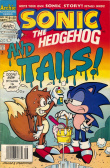
|
| Issue 014 |

|
| Issue 015 |

|
| Issue 016 |

|
| Issue 017 |

|
| Issue 018 |

|
| Issue 019 |

|
| Issue 020 |

|
| Issue 021 |

|
| Issue 022 |

|
| Issue 023 |

|
| Issue 024 |

|
| Issue 025 |

|
| Issue 026 |

|
| Issue 027 |

|
| Issue 028 |

|
| Issue 029 |

|
| Issue 030 |

|
| Issue 031 |

|
| Issue 032 |

|
| Issue 033 |

|
| Issue 034 |

|
| Issue 035 |

|
| Issue 036 |

|
| Issue 037 |

|
| Issue 038 |

|
| Issue 039 |

|
| Issue 040 |

|
| Issue 041 |

|
| Issue 042 |
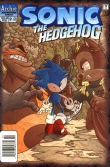
|
| Issue 043 |

|
| Issue 044 |

|
| Issue 045 |

|
| Issue 046 |
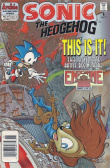
|
| Issue 047 |

|
| Issue 048 |

|
| Issue 049 |

|
| Issue 050 |

|
| Issue 051 |

|
| Issue 052 |

|
| Issue 053 |
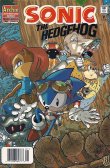
|
| Issue 054 |

|
| Issue 055 |

|
| Issue 056 |

|
| Issue 057 |

|
| Issue 058 |

|
| Issue 059 |
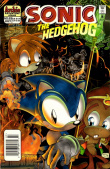
|
| Issue 060 |

|
| Issue 061 |

|
| Issue 062 |

|
| Issue 063 |

|
| Issue 064 |

|
| Issue 065 |

|
| Issue 066 |

|
| Issue 067 |

|
| Issue 068 |

|
| Issue 069 |

|
| Issue 070 |

|
| Issue 071 |

|
| Issue 072 |

|
| Issue 073 |

|
| Issue 074 |

|
| Issue 075 |

|
| Issue 076 |

|
| Issue 077 |
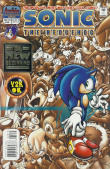
|
| Issue 078 |

|
| Issue 079 |

|
| Issue 080 |

|
| Issue 081 |

|
| Issue 082 |

|
| Issue 083 |

|
| Issue 084 |

|
| Issue 085 |

|
| Issue 086 |

|
| Issue 087 |

|
| Issue 088 |

|
| Issue 089 |

|
| Issue 090 |

|
| Issue 091 |

|
| Issue 092 |

|
| Issue 093 |

|
| Issue 094 |

|
| Issue 095 |

|
| Issue 096 |

|
| Issue 097 |

|
| Issue 098 |

|
| Issue 099 |

|
| Issue 100 |

|
| Issue 101 |

|
| Issue 102 |
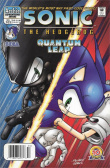
|
| Issue 103 |

|
| Issue 104 |

|
| Issue 105 |

|
| Issue 106 |

|
| Issue 107 |

|
| Issue 108 |

|
| Issue 109 |

|
| Issue 110 |

|
| Issue 111 |

|
| Issue 112 |

|
| Issue 113 |

|
| Issue 114 |
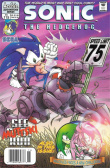
|
| Issue 115 |

|
| Issue 116 |

|
| Issue 117 |

|
| Issue 118 |

|
| Issue 119 |

|
| Issue 120 |

|
| Issue 121 |

|
| Issue 122 |

|
| Issue 123 |

|
| Issue 124 |

|
| Issue 125 |

|
| Issue 126 |

|
| Issue 127 |

|
| Issue 128 |

|
| Issue 129 |

|
| Issue 130 |

|
| Issue 131 |

|
| Issue 132 |

|
| Issue 133 |

|
| Issue 134 |

|
| Issue 135 |

|
| Issue 136 |

|
| Issue 137 |

|
| Issue 138 |

|
| Issue 139 |

|
| Issue 140 |

|
| Issue 141 |
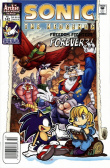
|
| Issue 142 |

|
| Issue 143 |

|
| Issue 144 |

|
| Issue 145 |

|
| Issue 146 |
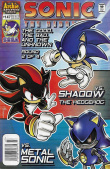
|
| Issue 147 |

|
| Issue 148 |

|
| Issue 149 |

|
| Issue 150 |

|
| Issue 151 |

|
| Issue 152 |

|
| Issue 153 |

|
| Issue 154 |

|
| Issue 155 |

|
| Issue 156 |

|
| Issue 157 |
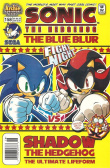
|
| Issue 158 |

|
| Issue 159 |

|
| Issue 160 |

|
| Issue 161 |

|
| Issue 162 |

|
| Issue 163 |

|
| Issue 164 |

|
| Issue 165 |

|
| Issue 166 |

|
| Issue 167 |

|
| Issue 168 |
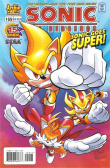
|
| Issue 169 |

|
| Issue 170 |

|
| Issue 171 |

|
| Issue 172 |

|
| Issue 173 |

|
| Issue 174 |

|
| Issue 175 |

|
| Issue 176 |

|
| Issue 177 |

|
| Issue 178 |
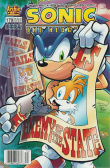
|
| Issue 179 |

|
| Issue 180 |

|
| Issue 181 |

|
| Issue 182 |

|
| Issue 183 |

|
| Issue 184 |

|
| Issue 185 |

|
| Issue 186 |
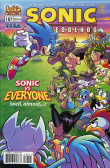
|
| Issue 187 |

|
| Issue 188 |

|
| Issue 189 |

|
| Issue 190 |

|
| Issue 191 |
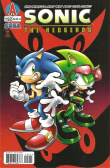
|
| Issue 192 |

|
| Issue 193 |

|
| Issue 194 |
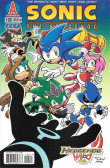
|
| Issue 195 |

|
| Issue 196 |

|
| Issue 197 |

|
| Issue 198 |

|
| Issue 199 |
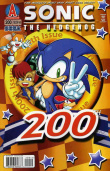
|
| Issue 200 |

|
| Issue 201 |

|
| Issue 202 |

|
| Issue 203 |

|
| Issue 204 |
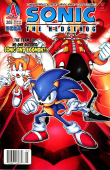
|
| Issue 205 |
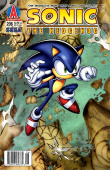
|
| Issue 206 |

|
| Issue 207 |
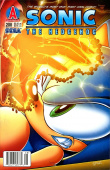
|
| Issue 208 |

|
| Issue 209 |

|
| Issue 210 |

|
| Issue 211 |

|
| Issue 212 |

|
| Issue 213 |
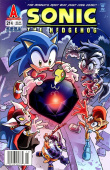
|
| Issue 214 |

|
| Issue 215 |
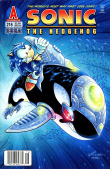
|
| Issue 216 |
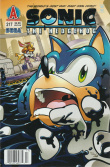
|
| Issue 217 |
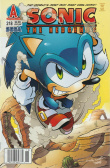
|
| Issue 218 |

|
| Issue 219 |

|
| Issue 220 |
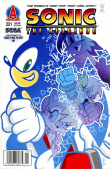
|
| Issue 221 |

|
| Issue 222 |

|
| Issue 223 |

|
| Issue 224 |

|
| Issue 225 |

|
| Issue 226 |

|
| Issue 227 |

|
| Issue 228 |

|
| Issue 229 |
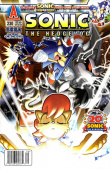
|
| Issue 230 |

|
| Issue 231 |

|
| Issue 232 |

|
| Issue 233 |

|
| Issue 234 |

|
| Issue 235 |

|
| Issue 236 |
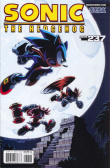
|
| Issue 237 |
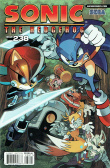
|
| Issue 238 |

|
| Issue 239 |

|
| Issue 240 |

|
| Issue 241 |

|
| Issue 242 |

|
| Issue 243 |
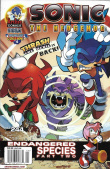
|
| Issue 244 |

|
| Issue 245 |

|
| Issue 246 |

|
| Issue 247 |

|
| Issue 248 |

|
| Issue 249 |

|
| Issue 250 |

|
| Issue 251 |

|
| Issue 252 |

|
| Issue 253 |

|
| Issue 254 |

|
| Issue 255 |

|
| Issue 256 |

|
| Issue 257 |

|
| Issue 258 |

|
| Issue 259 |

|
| Issue 260 |

|
| Issue 261 |

|
| Issue 262 |

|
| Issue 263 |

|
| Issue 264 |

|
| Issue 265 |

|
| Issue 266 |

|
| Issue 267 |

|
| Issue 268 |

|
| Issue 269 |

|
| Issue 270 |

|
| Issue 271 |

|
| Issue 272 |

|
| Issue 273 |

|
| Issue 274 |

|
| Issue 275 |

|
| Issue 276 |

|
| Issue 277 |

|
| Issue 278 |

|
| Issue 279 |

|
| Issue 280 |

|
| Issue 281 |

|
| Issue 282 |

|
| Issue 283 |

|
| Issue 284 |

|
| Issue 285 |

|
| Issue 286 |

|
| Issue 287 |

|
| Issue 288 |

|
| Issue 289 |

|
| Issue 290 |

|
| Issue 291 |
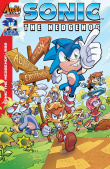
|
| Issue 292 |

|
| Issue 293 |
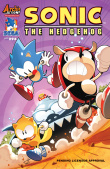
|
| Issue 294 |

|
| Issue 295 |
| File:Sonic Archie 000.25.pdf |
| Issue ¼ |
Sonic Super Special issues

|
| Sonic Super Special 01 |
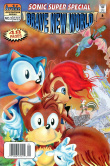
|
| Sonic Super Special 02 |
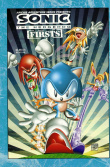
|
| Sonic Super Special 03 |

|
| Sonic Super Special 04 |

|
| Sonic Super Special 05 |

|
| Sonic Super Special 06 |

|
| Sonic Super Special 07 |

|
| Sonic Super Special 08 |

|
| Sonic Super Special 09 |

|
| Sonic Super Special 10 |

|
| Sonic Super Special 11 |

|
| Sonic Super Special 12 |

|
| Sonic Super Special 13 |

|
| Sonic Super Special 14 |
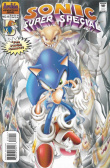
|
| Sonic Super Special 15 |
Free Comic Book Day issues

|
| FCBD |
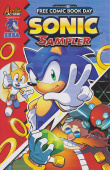
|
| FCBD |

|
| FCBD 2007 |
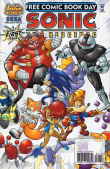
|
| FCBD 2008 |

|
| FCBD 2009 |

|
| FCBD 2010 |

|
| FCBD 2011 |

|
| FCBD 2012 |

|
| FCBD 2013 |

|
| FCBD 2014 |
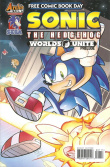
|
| FCBD 2015 |

|
| FCBD 2017 |
Mini-series spin-offs
Sonic the Hedgehog Presents: Princess Sally issues

|
| Issue 1 |

|
| Issue 2 |

|
| Issue 3 |
Sonic the Hedgehog's Buddy Tails issues

|
| Issue 1 |

|
| Issue 2 |

|
| Issue 3 |
Sonic's Friendly Nemesis Knuckles issues

|
| Issue 1 |

|
| Issue 2 |

|
| Issue 3 |
Sonic Quest: The Death Egg Saga issues
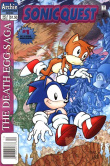
|
| Issue 1 |

|
| Issue 2 |
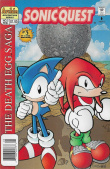
|
| Issue 3 |
Special issues

|
| Knuckles' Chaotix |
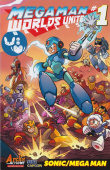
|
| Mega Man Worlds Unite: Battles 1 |

|
| Sonic & Knuckles |

|
| Sonic & Knuckles: Mecha Madness |

|
| Sonic Blast |

|
| Sonic Live! |
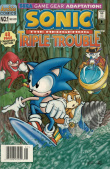
|
| Sonic Triple Trouble |

|
| Sonic Worlds Unite: Battles 1 |

|
| Super Sonic vs Hyper Knuckles |
Digital exclusives

|
| Sonic the Hedgehog: Bunny Blast! |
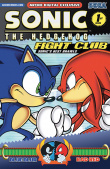
|
| Sonic the Hedgehog: Fight Club |

|
| Sonic the Hedgehog: Love Stinks! |

|
| Sonic's Monster Mash-Up! |

|
| Sonic: The Games - Classic |

|
| Sonic: The Games - Millennium |

|
| Sonic: The Games - Modern |
See also
- List of creators of Sonic the Hedgehog (Archie)
- Knuckles the Echidna (Archie comics)
- Sonic X (Archie comics)
- Sonic Universe
- Sonic Boom (Archie comics)
External links
References
- ↑ https://groups.google.com/g/rec.arts.comics.misc/c/kXDTLUyeIZc/m/llXqNGqnXD0J (Wayback Machine: 2022-11-25 03:27)
- ↑ https://archiecomics.com/firstlooks12-28-16/ (Wayback Machine: 2020-08-06 07:09)
- ↑ http://archie-blogs.archiecomics.com/sonic/2008/07/from_the_cuinness_book_of_worl.html (Wayback Machine: 2008-09-12 13:57)
- ↑ @sonic_hedgehog on Twitter (Wayback Machine: 2017-07-25 03:17)
- ↑ 5.0 5.1 5.2 5.3 File:SonicTheBeginning Archie.pdf, page 6
| Sonic the Hedgehog (Archie comics) | |
|---|---|
| 1993-94 | 1 | 2 | 3 | 4 | 5 | 6 | 7 | 8 | 9 | 10 | 11 | 12 | 13 | 14 | 15 | 16 | 17 | 18 | 19 |
| 1995-96 | 20 | 21 | 22 | 23 | 24 | 25 | 26 | 27 | 28 | 29 | 30 | 31 | 32 | 33 | 34 | 35 | 36 | 37 | 38 | 39 | 40 | 41 | 42 | 43 |
| 1997-98 | 44 | 45 | 46 | 47 | 48 | 49 | 50 | 51 | 52 | 53 | 54 | 55 | 56 | 57 | 58 | 59 | 60 | 61 | 62 | 63 | 64 | 65 | 66 | 67 |
| 1999-00 | 68 | 69 | 70 | 71 | 72 | 73 | 74 | 75 | 76 | 77 | 78 | 79 | 80 | 81 | 82 | 83 | 84 | 85 | 86 | 87 | 88 | 89 | 90 | 91 |
| 2001-02 | 92 | 93 | 94 | 95 | 96 | 97 | 98 | 99 | 100 | 101 | 102 | 103 | 104 | 105 | 106 | 107 | 108 | 109 | 110 | 111 | 112 | 113 | 114 | 115 | 116 | 117 |
| 2003-04 | 118 | 119 | 120 | 121 | 122 | 123 | 124 | 125 | 126 | 127 | 128 | 129 | 130 | 131 | 132 | 133 | 134 | 135 | 136 | 137 | 138 | 139 | 140 | 141 | 142 | 143 |
| 2005-06 | 144 | 145 | 146 | 147 | 148 | 149 | 150 | 151 | 152 | 153 | 154 | 155 | 156 | 157 | 158 | 159 | 160 | 161 | 162 | 163 | 164 | 165 | 166 | 167 | 168 | 169 | 170 |
| 2007-08 | 171 | 172 | 173 | 174 | 175 | 176 | 177 | 178 | 179 | 180 | 181 | 182 | 183 | 184 | 185 | 186 | 187 | 188 | 189 | 190 | 191 | 192 | 193 | 194 | 195 |
| 2009-10 | 196 | 197 | 198 | 199 | 200 | 201 | 202 | 203 | 204 | 205 | 206 | 207 | 208 | 209 | 210 | 211 | 212 | 213 | 214 | 215 | 216 | 217 | 218 | 219 | 220 |
| 2011-12 | 221 | 222 | 223 | 224 | 225 | 226 | 227 | 228 | 229 | 230 | 231 | 232 | 233 | 234 | 235 | 236 | 237 | 238 | 239 | 240 | 241 | 242 | 243 | 244 |
| 2013-14 | 245 | 246 | 247 | 248 | 249 | 250 | 251 | 252 | 253 | 254 | 255 | 256 | 257 | 258 | 259 | 260 | 261 | 262 | 263 | 264 | 265 | 266 | 267 |
| 2015-16 | 268 | 269 | 270 | 271 | 272 | 273 | 274 | 275 | 276 | 277 | 278 | 279 | 280 | 281 | 282 | 283 | 284 | 285 | 286 | 287 | 288 | 289 | 290 |
| Unreleased | Everything Old is Newt Again | 291 | 292 | 293 | 294 | 295 |
| Knuckles the Echidna | |
| 1 | 2 | 3 | 4 | 5 | 6 | 7 | 8 | 9 | 10 | 11 | 12 | 13 | 14 | 15 | 16 | 17 | 18 | 19 | 20 | 21 | 22 | 23 | 24 | 25 | 26 | 27 | 28 | 29 | 30 | 31 | 32 | |
| Sonic Universe | |
| 1 | 2 | 3 | 4 | 5 | 6 | 7 | 8 | 9 | 10 | 11 | 12 | 13 | 14 | 15 | 16 | 17 | 18 | 19 | 20 | 21 | 22 | 23 | 24 | 25 | 26 | 27 | 28 | 29 | 30 | 31 | 32 | 33 | 34 | 35 | 36 | 37 | 38 | 39 | 40 | 41 | 42 | 43 | 44 | 45 | 46 | 47 | 48 | 49 | 50 | 51 | 52 | 53 | 54 | 55 | 56 | 57 | 58 | 59 | 60 | 61 | 62 | 63 | 64 | 65 | 66 | 67 | 68 | 69 | 70 | 71 | 72 | 73 | 74 | 75 | 76 | 77 | 78 | 79 | 80 | 81 | 82 | 83 | 84 | 85 | 86 | 87 | 88 | 89 | 90 | 91 | 92 | 93 | 94 | |
| Unreleased | 50 | 95 | 96 | 97 | 98 |
| Mini-series | |
| The Original Sonic Mini-Series: ¼ | 0 | 1 | 2 | 3 | Sally Mini-Series: 1 | 2 | 3 | Tails Mini-Series: 1 | 2 | 3 | Knuckles Mini-Series: 1 | 2 | 3 | Sonic Quest: The Death Egg Saga 1 | 2 | 3 | |
| Specials & Digests | |
| Sonic in Your Face! | Sonic & Knuckles | Sonic Triple Trouble | Knuckles' Chaotix | Super Sonic vs Hyper Knuckles | Sonic & Knuckles: Mecha Madness | Sonic Live! | Sonic Blast Free Comic Book Specials: FCBD 2007 | FCBD 2008 | FCBD 2009 | FCBD 2010 | FCBD 2011 | FCBD 2012 | FCBD 2013 | HCF 2013 | FCBD 2014 | FCBD 2015 | FCBD 2016 | FCBD 2017
Sonic Super Special Magazine: 1 | 2 | 3 | 4 | 5 | 6 | 7 | 8 | 9 | 10 | 11 | 12 | 13 | 14 (unreleased) | 15
Sonic Super Digest: 1 | 2 | 3 | 4 | 5 | 6 | 7 | 8 | 9 | 10 | 11 | 12 | 13 | 14 | 15 | 16 | 17 | 18 | 19
Sonic: Mega Drive: Sonic: Mega Drive | Sonic: Mega Drive - The Next Level | Sonic: Mega Drive - Overdrive | Graphic novel
| |
| Sonic X | |
| 1 | 2 | 3 | 4 | 5 | 6 | 7 | 8 | 9 | 10 | 11 | 12 | 13 | 14 | 15 | 16 | 17 | 18 | 19 | 20 | 21 | 22 | 23 | 24 | 25 | 26 | 27 | 28 | 29 | 30 | 31 | 32 | 33 | 34 | 35 | 36 | 37 | 38 | 39 | 40 | |
| Sonic Boom | |
| 1 | 2 | 3 | 4 | 5 | 6 | 7 | 8 | 9 | 10 | 11 | |
| Compilations | |
| Sonic the Hedgehog Firsts | Sonic the Hedgehog: The Beginning | Sonic: Genesis | Worlds Collide: 1 | 2 | 3 | Deluxe Edition | Worlds Unite: 1 | 2 | 3 Sonic Archives: 0 | 1 | 2 | 3 | 4 | 5 | 6 | 7 | 8 | 9 | 10 | 11 | 12 | 13 | 14 | 15 | 16 | 17 | 18 | 19 | 20 | 21 | 22 | 23 | 24 | 25 | 26
| |
| Miscellaneous | |
| Archie & Friends: A Halloween Tale | Sabrina the Teenage Witch 28 | Archie's Weird Mysteries | Sonic and the Secret Rings | The Complete Sonic Comic Encyclopedia | Sonic Comics Spectacular: Speed of Sound | The Art of Sonic the Hedgehog Comics | Mega Man: 24 | 25 | 26 | 27 | 50 | 51 | 52 | |